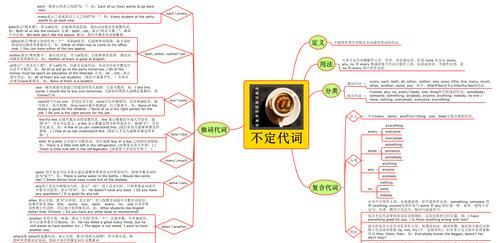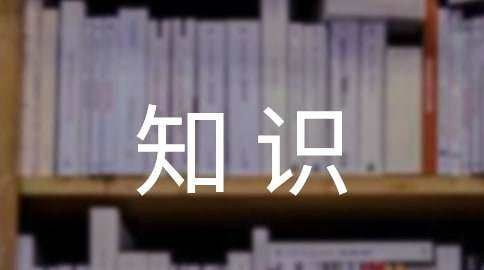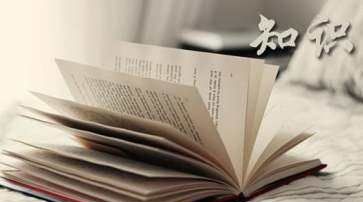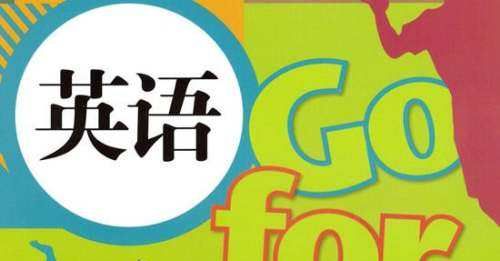本文目录
英语的五种基本类型及例句
第一种句型:主语+谓语
第二种句型:主语+谓语+表语
第三种句型:主语+谓语+宾语
第四种句型:主语+谓语+间接宾语+直接宾语
第五种句型:主语+谓语+宾语+宾语补足语

英语五大基本句型讲解
“主语 + 谓语”(即“主谓”句型):
这一句型英汉语言结构形式完全相同,说明“某人或某物如何动作”,或者说“某人或某物自身怎样运动”。
例:They arrived in Harbin yesterday morning.
扩展资料
“主语 + 谓语 + 宾语”(即“主谓宾”句型):

这一句型英汉语言的结构形式完全相同,用以说明“某人或某物做什么事情”,或者说“某人或某物发出了动作,并且其动作涉及到另一个人或物”。
例:I study English.
“主语 + 谓语 + 间接宾语 + 直接宾语”(即“主谓双宾”句型):
这一句型英汉语序结构相同,说明“某人为谁(间接宾语为人)做某事”,或者说“某人或物的运动涉及到两个对象,其中一个间接对象为人,另一个为物”。
例:Our teacher taught us English.
“主语 + 谓语 + 宾语 + 宾语补足语”(即“主谓宾补”句型):
这一句型说明“某人或某物要求(使、让)某人做什么”或“某人感觉某人或物怎么样”。
例: He asked her to go there.
“主语 + 系动词+ 表语”(即“主系表”句型):
这一句型用以说明“某人(某物、某事、某种概念)具有什么特征或处于什么状态”。汉语的'“是”字结构属于这一英语句型的形式之一。常用的联系动词有be, keep,lie, remain, stand, become, fall, get, go, grow, turn, look, feel, seem, smell, sound, taste, 等。
例: I am a teacher. 我是一名老师。
基础的英语语法知识
5大基础英语语法知识
零基础学英语,大家要学好语法知识,下面5大基础英语语法知识,你能记住多少?一起来看看。

名词单复数
1.一般情况,直接加-s,如:book-books, bag-bags, cat-cats, bed-beds
2.以s. x. sh. ch结尾,加-es,如:bus-buses, box-boxes, brush-brushes, watch-watches
3.以“辅音字母+y”结尾,变y为i, 再加-es,如:family-families, strawberry-strawberries
4.以“f或fe”结尾,变f或fe为v, 再加-es,如:knife-knives
5.不规则名词复数:man-men, woman-women, policeman-policemen, policewoman-policewomen, mouse-mice child-children, foot-feet, tooth-teeth, fish-fish, people-people, Chinese-Chinese, Japanese-Japane
6. 不可数名词的复数就是原型: paper, juice, water, milk, rice, tea
名词的格
(1) 有生命的东西的名词所有格:
a) 单数后加 ’s 如: Lucy’s ruler my father’s shirt
b) 以s 结尾的复数名词后加 ’如: his friends’ bags
c) 不以s 结尾的复数后加 ’s children’s shoes
并列名词中,如果把 ’s加在最后一个名词后,表示共有, 如:
Tom and Mike’s car 汤姆和迈克共有的小汽车
要表示所有物不是共有的',应分别在并列名词后加’s
Tom’s and Mike’s cars 汤姆和麦克各自的小汽车
(2)表示无生命东西的名词通常用“ of +名词”来表示所有关系:如:
a picture of the classroom a map of China
不定冠词,定冠词种类
1. (1)不定冠词:a / an a unit / an uncle
元音开头的可数名词前用an :
an egg / an apple / an orange / an eraser / an answer / an ID card / an alarm clock / an actor / an actress / an e-mail / an address / an event / an example / an opera / an houran old man / an interesting book / an exciting sport / an action movie / an art lesson /
(2)定冠词:the
the egg the plane
2. 用法:定冠词的用法:
(1)特指某(些)人或某(些)物: The ruler is on the desk
(2)复述上文提到的人或物:He has a sweater. The sweater is new.
(3)谈话双方都知道的人或物:The boys aren’t at school.
(4)在序数词前: John’s birthday is February the second.
(5)用于固定词组中: in the morning / afternoon / evening
不用冠词的情况
(1)专有名词前:China is a big country.
(2)名词前有定语:this , that , my , your , some, any , no 等:This is my baseball.
(3)复数名词表示一类人和事:Monkeys can’t swim. They are teachers.
(4)在节日,日期,月份,季节前:Today is Christmas Day. It’s Sunday.
(5)一日三餐前:We have breakfast at 6:30.
(6)球类 棋类运动前:They often play football after class. He plays chess at home.
但乐器前要用定冠词:I play the guitar very well.
(7)学科名称前:My favorite subject is music.
(8)在称呼或头衔的名词前:This is Mr Li.
(9)固定词组中:at noon at night by bus
语法知识三:常用介词:in, on, at, behind等
1.at表示时间概念的某一个点。(在某时刻、时间、阶段等)。
at 1:00(dawn,midnight,noon)在一点钟(黎明、午夜、中午)
2.on
1)表示具体日期。
注:(1)关于"在周末"的几种表示法:
at(on)the weekend在周末---特指
at(on)weekends在周末---泛指
over the weekend在整个周末
during the weekend在周末期间
(2)在圣诞节,应说at Christmas?而不说on Christmas?
2)在(刚……)的时候。
On reaching the city he called up his parents.
一到城里他就给父母打了一个电话。
3.in
1)表示"时段"、"时期",在多数情况下可以和during互换,前者强调对比,后者强调持续。 in(during)1988(December,the 20th century)在一九八八年(十二月、二十世纪)
动词的四种时态
(1)一般现在时:
一般现在时的构成
1. be动词:主语+be(am, is, are)+其它。如: I am a boy. 我是一个男孩。
2. 行为动词:主语+行为动词(+其它)。 如: We study English. 我们学习英语。
当主语为第三人称单数(he, she, it)时,要在动词后加"-s"或"-es"。如:Mary likes Chinese.玛丽喜欢汉语。
动词+s的变化规则
1.一般情况下,直接加-s,如:cook-cooks, milk-milks
2.以s. x. sh. ch. o结尾,加-es,如:guess-guesses, wash-washes, watch-watches, go-goes
3.以“辅音字母+y”结尾,变y为i, 再加-es,如:study-studies
(2)一般过去时:
动词过去式详解 动词的过去式的构成规则有:
A、规则动词
① 一般直接在动词的后面加ed:如 worked , learned , cleaned , visited
② 以e结尾的动词直接加d:如 lived , danced , used
③ 以辅音字母加y结尾的动词要改y为i再加ed(此类动词较少)如 study – studied carry – carried worry – worried (注意play、stay不是辅音字母加y,所以不属于此类)
④ 双写最后一个字母(此类动词较少)如 stopped
B、不规则动词(此类词并无规则,须熟记)小学阶段要记住以下动词的原形和过去式:sing – sang , eat – ate ,
see – saw , have – had , do – did , go – went , take – took , buy – bought , get – got , read – read ,fly – flew , am/is – was ,
are – were , say – said , leave – left , swim – swam , tell – told , draw – drew , come – came , lose – lost , find – found , drink – drank , hurt – hurt , feel – felt
(3)一般将来时:
基本结构:
①be going to + do;
②will+ do. be going to = will
I am going to go swimming tomorrow(明天). = I will go swimming tomorrow.
(4)现在进行时: am,is,are+动词现在分词
动词现在分词详解 动词的ing形式的构成规则:
① 一般的直接在后面加上ing , 如doing , going , working , singing , eating
② 以e 结尾的动词,要先去e再加ing ,如having , writing
③ 双写最后一个字母的(此类动词极少)有:running , swimming , sitting , getting.
;英语语法五大基本句型例子
英语语法五大基本句型
英语句子是由主语(subject)、 谓语动词(verb)、宾语(object)、表语(predicative)、状语(adverbial)、宾语补足语(object complement)等成分组成。以下是我整理的英语语法五大基本句型,我们一起看看吧!

一There be 句型
1、解释:“……地方有……”;
2、结构:
There be + 主语 + 地点状语
eg:There are some apples on the table.
3、考点:主谓一致
(1)be 后名词是单数名词或不可数名词,be 用 is 或者 was;后接可数名词复数则用 are 或were。
eg:
There is an apple in the fridge.
There is some milk in the fridge.
There isn’t any / is no money in the box.
There are many girls in the room.
(2)如果 be 后面是几个并列名词作主语,be 的`单复数和最靠近的名词保持一致——就近原则。
eg:
There is a book and two pencils on the desk.
There are two pencils and a book on the desk.
二主系表
1、结构:主语+系动词+表语
eg:
He is good.
He is a good student.
2、系动词:
必须加上一个表明主语身份或状态的表语才能表达完整的意思,这类动词叫系动词。
常见系动词:
(1)be 动词——is/am/are/was/were
(2)感官动词——feel/look/sound/taste/smell
(3)表转变动词——get/grow/become/go
eg:
感官动词主系表——It looks perfect. 它看上去真完美。
表转变动词主系表——The sky grew dark./ It became dirty.
3、考点:系动词后面跟形容词
eg:
He looks at her happily.(happily 修饰 look at,look at 解释为看着,look 是实义动词)
He looks happy when he sees her.(look 不及物,这里没有跟介词,单独行动,翻译/为“看上去”,是系动词,后跟形容词。)
三主谓宾
1、结构:主语+谓语+宾语
主语:动作发出者;
谓语:动作本身(实义动词);
宾语:动作承受者
eg:I walk a bear. 我溜一只熊。
四主谓宾宾
结构:主语+谓语+宾语+宾语
双宾语:直接宾语(物);间接宾语(人)——物直人间
eg:
I give him the book.
I give the book to him.
谓语后跟间接宾语时,直接宾语前不需要介词;谓语后跟直接宾语时,间接宾语前加介词 to/for。
五主谓宾宾补
结构:主语+谓语+宾语+宾补
宾补:一个宾语不能完整表达出意思,需要加一个补充成分来补足宾语使句意完整。
eg:
He made me happy.
I keep the room tidy.
My mother saw me doing housework.
六能力检测走起
一星题
There___ not ____ milk in the cup on the table .
A. are, many B. are , much
C. is ,many D. is ,much
2. How many ___ are there in the room ?
A. apple B. students
C. milk D. paper
3. There ____ pencil-box, two books and some flowers on the desk.
A. is a B. are some
C. has a D. have some
4. Yesterday was my birthday. My mother ____.
A. made a cake to me B. made a cake me
C. made for me a cake D. made me a cake
5. -Shall we go for a picnic in the park this Saturday?
-Oh, that _______ good.
A. feels B.looks
C smells D.sounds
两星题
1. There ____ a lot of good news in today's newspaper.
A. is B. are
C. was D. were
2. Roses in bloom smell ____.
A. sweetly B. sweet
C. sweeten D. sweetness
翻译:(如有单词提示,请用提示单词)
1. 我昨晚看见爸爸在工作。(并写出句型)
2. 他变得很生气。(get)(并写出句型)
3. 我给妈妈买了一本书。(通过变换宾语位置翻译出两句句子,并写出句型)
三星题
1. - Is this the last exam we have to take ? - No, but there ____ another test three months later from now.
A. will be going to B. is
C. will be D. has been
2. There ______ great changes in such kind of computers in the last few years.
A. is B. are
C. will be D. have been
3. There ________ a football match on TV this evening.
A. will have B. is going to be
C. has D. is going to have
4. Canned food does not go ____.
A. bad easily B. badly easy `
C. bad easy D. badly easily
5..I will make your dream ____.
A. comes true B. to come true
C. coming truly D. come true
;以上就是关于英语五大基本概念,英语的五种基本类型及例句的全部内容,以及英语五大基本概念 的相关内容,希望能够帮到您。
